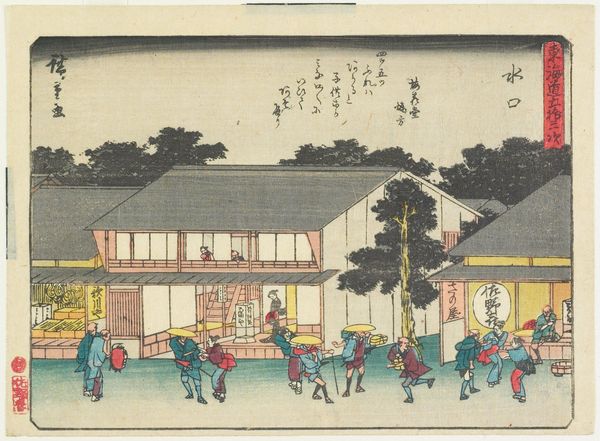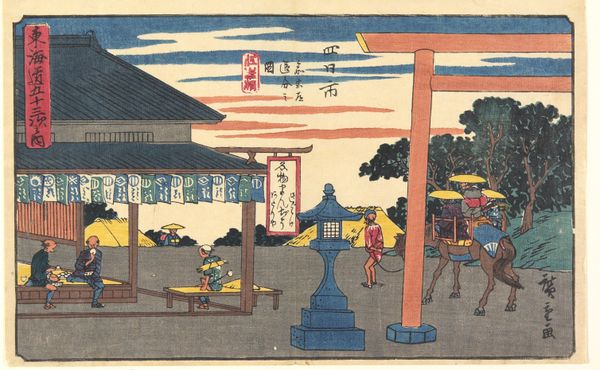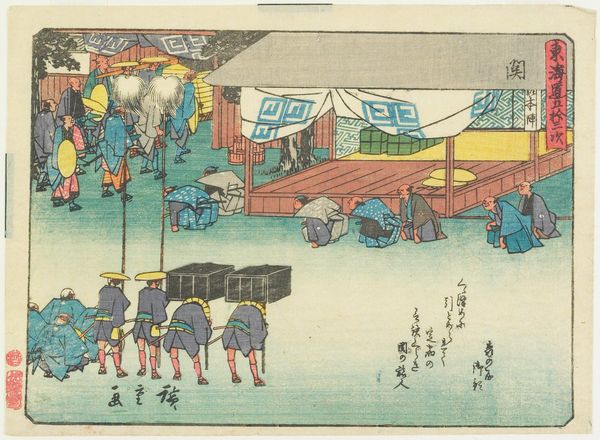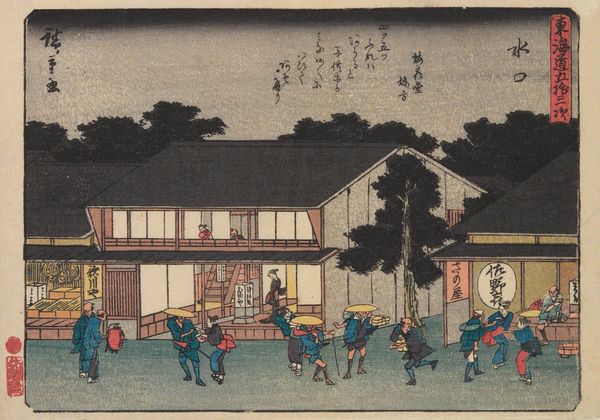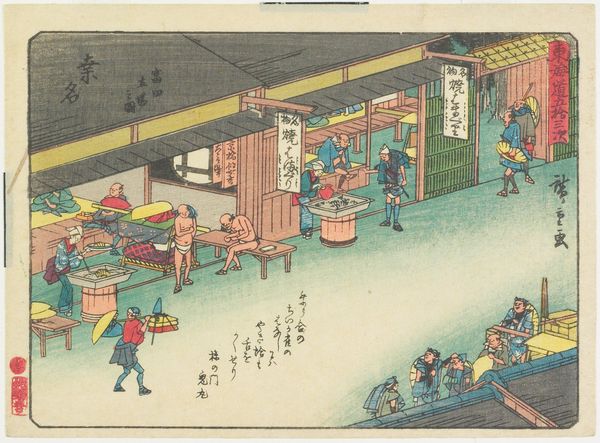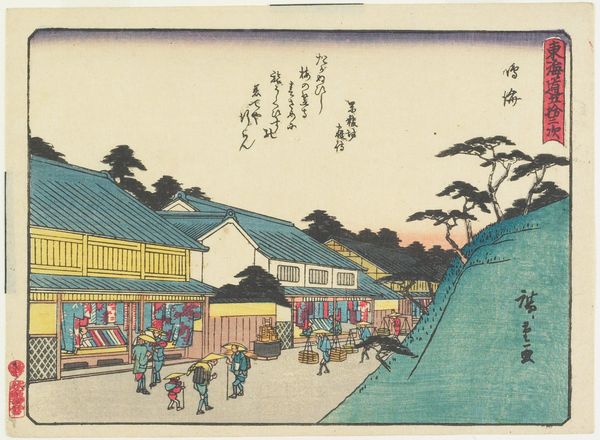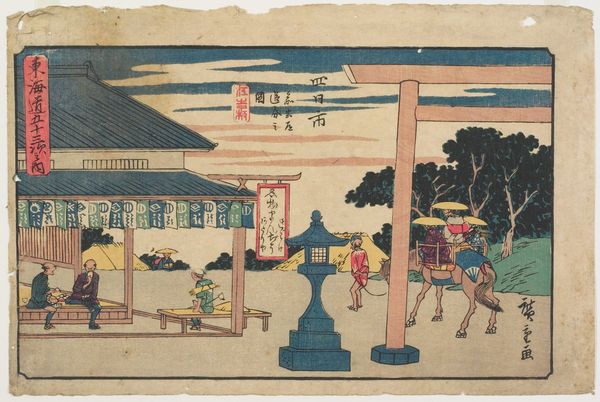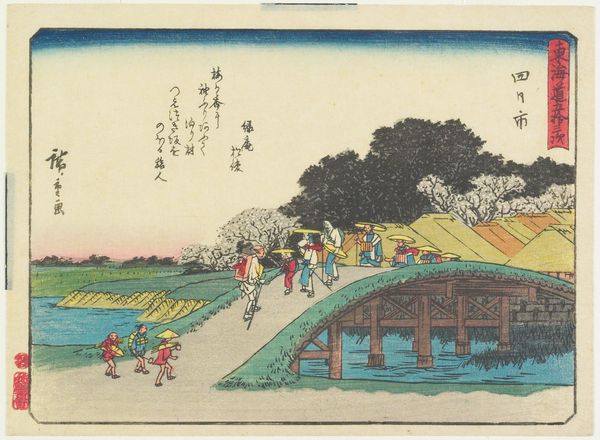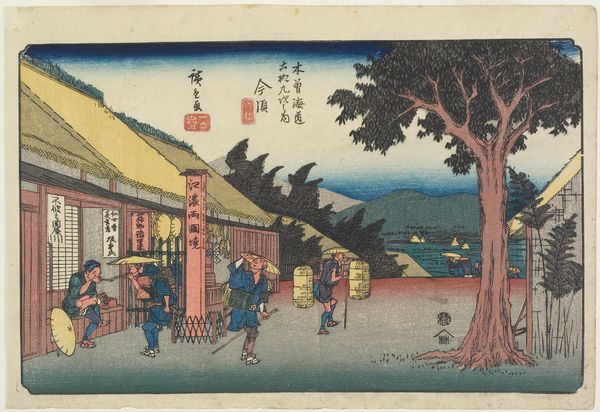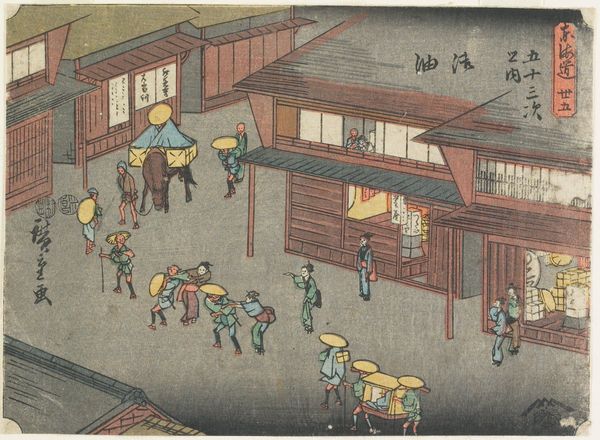
print, ink, woodblock-print
#
narrative-art
# print
#
asian-art
#
landscape
#
ukiyo-e
#
ink
#
woodblock-print
#
genre-painting
Dimensions: 6 1/8 × 8 1/4 in. (15.6 × 20.9 cm) (image, horizontal chūban)
Copyright: Public Domain
Utagawa Hiroshige’s ‘Mariko’ print was made with woodblock and ink, sometime in the 19th century. The entire image has a sense of layered texture, as the woodblock printing technique allows for the buildup of successive colors. The print shows travelers pausing for refreshments at a roadside rest stop. Its material qualities – the relatively low cost of production, the reproducibility of the woodblock print, and the easy portability – all speak to the growing market for images of everyday life, and the rise of consumer culture. The lines are crisp, and the colors are bright, due to the ukiyo-e process that was used, which involved careful carving and registration of multiple blocks. Woodblock prints like this one were not considered high art at the time, yet it demanded considerable craftsmanship to produce the blocks used to create the print. It also allowed artists like Hiroshige to meet the rising demand for imagery from a wider segment of society. Looking at ‘Mariko,’ it becomes clear that understanding the materials and processes is key to understanding its cultural significance.
Comments
minneapolisinstituteofart about 2 years ago
⋮
The Tōkaidō was the main arterial road that connected Edo (present-day Tokyo) with Kyoto. As a result of the increasing travel boom in the late eighteenth and early nineteenth century, the road and its post stations became a popular motif in literature and art. Hiroshige emerged as the foremost designer of Tōkaidō landscape series, producing over twenty different ones. The novelty of this particular series is that each scenic view is accompanied by a comic poem (kyōka), and the series therefore became known as the Kyōka Tōkaidō. Each print focuses on a famous scenic view or a local specialty; here it is grated yam soup (tororo jiru), served at a popular restaurant that was used as resting stop by porters and travelers. Hiroshige cleverly inserted “product placements” inside the restaurant that would not have been there in reality. They are for the face powder Senjōko, sold by one Mr. Sakamoto in Edo, and for an array of woodblock prints presumably sold by the publisher of this print.
Join the conversation
Join millions of artists and users on Artera today and experience the ultimate creative platform.

